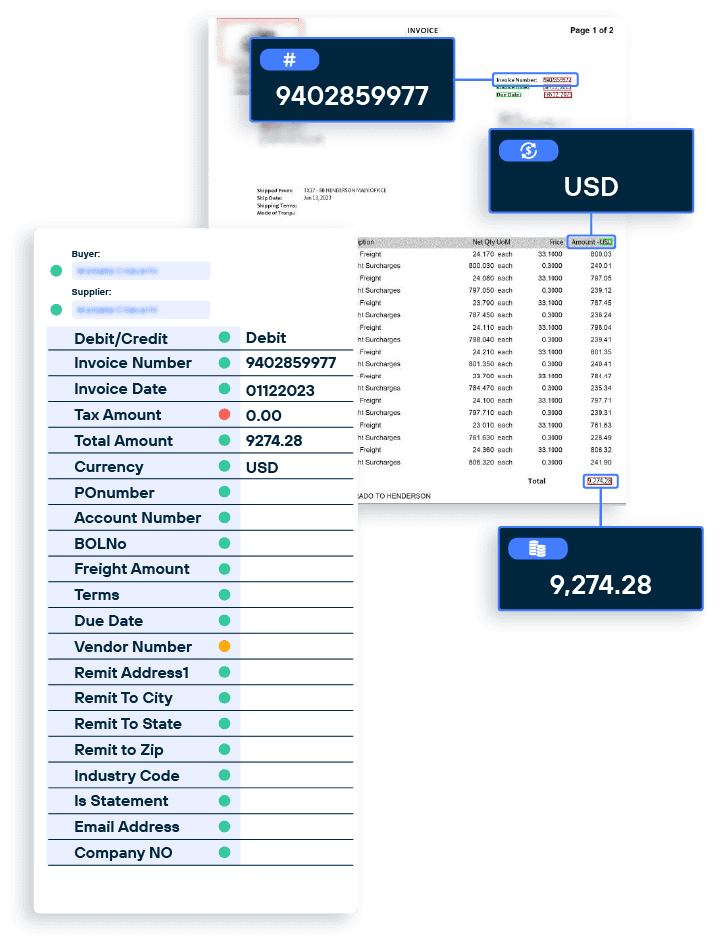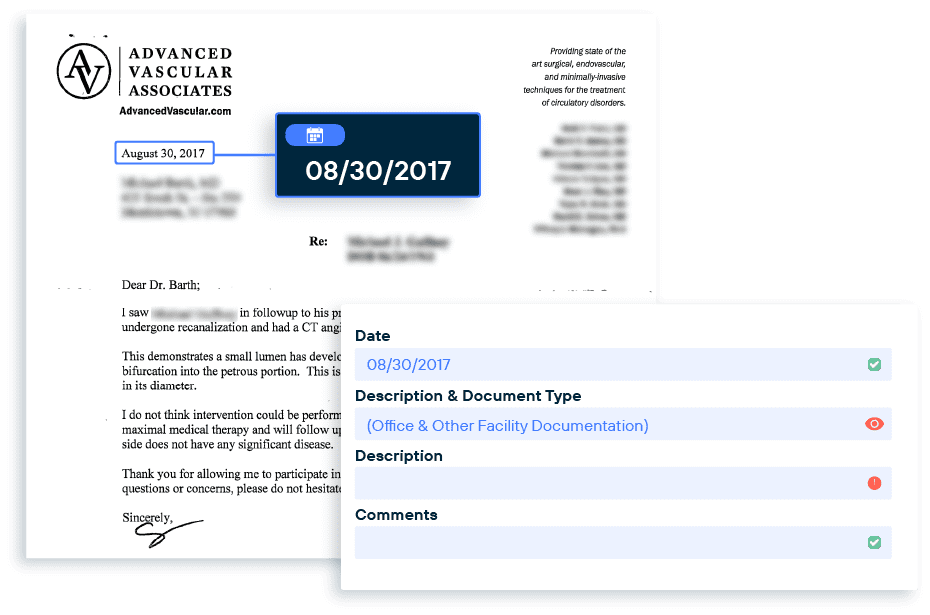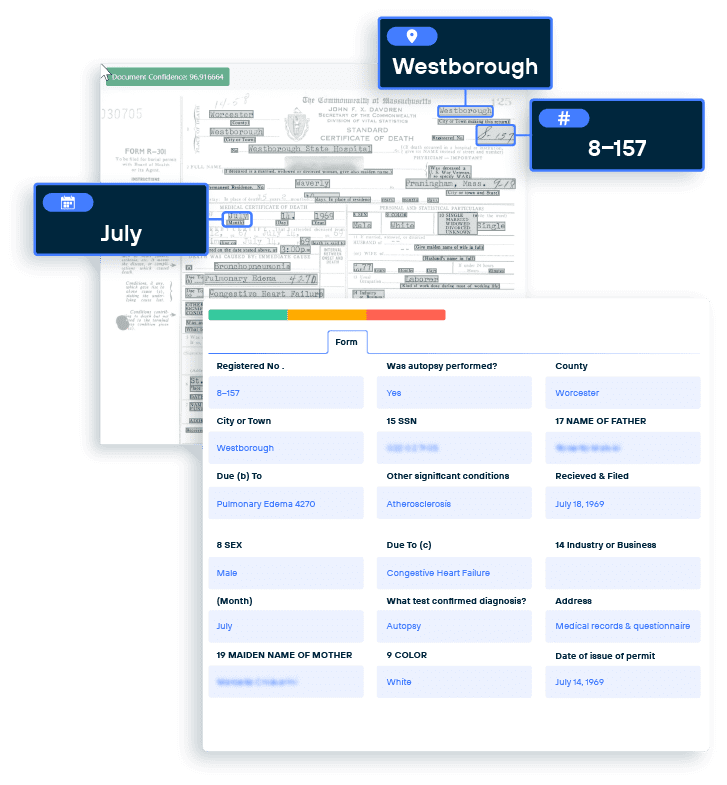There’s a lot of data out there. It comes in all sorts of different forms and sizes, and it can be tough to know what to do with it all. Every organization has structured, semi-structured, and unstructured data.
According to the International Data Corporation, about 80% of global data will be unstructured by 2025, but most organizations aren’t tapping into any of that data. What you do with that untouched data matters. That data can now be processed and analyzed to help us make better business decisions and improve customer experience.
What is structured data?
Structured data is information that is distinctively organized, factual, and related. It’s data that is easily readable and understandable by humans. Structured content is what we commonly consider data easily put into a spreadsheet, and it has predefined fields like headers with data falling into those categories.
Real-life example:
Company A has structured invoices. The headers and data are in the exact location on every invoice they use.
Other examples can include:
-
-
- Spreadsheets like Excel
- Invoices
- Purchase orders
- Claims
- Birth and death certificates
- Patient records
-
Pros and cons of structured data
Pros:
-
-
- Accessible: Structured data is easier to maintain with data warehouses; due to the sophistication of organized data, it’s easier to follow quality data management practices.
- Easy to understand by business users: Structured data does not require an in-depth understanding of different data types.
- Easily used by humans and machine learning algorithms: Since structured data has been around longer than unstructured data, more tools are available for using and analyzing structured data.
-
Cons:
-
-
- Limited context: Structured data often lacks the additional context and information that unstructured or semi-structured data can provide. Making it more challenging to understand the meaning and significance of the data.
-
What is unstructured data?
Unstructured data isn’t predefined or organized, but somewhat sporadic and all over the place. Unstructured data does not conform to a data model and does not readily have an identifiable structure that a computer program can use.
It comes in many shapes and sizes, like a paper document with write-in answers, a video, text messages, or even a website. Unstructured data is much more challenging to search and analyze and often includes qualitative data.
It requires more cutting-edge analytics techniques like data mining or text mining. Data mining is detecting patterns and interactions in large data sets to express potential outcomes in advance. In contrast, text mining turns unstructured data into structured data through natural language processing. Recent projections believe that 80% to 90% of the world’s data is unstructured, and only 0.5% is analyzed and used today.
Real-life example:
This hospital received this letter from a doctor outside their patient’s care network. It had no headers or prominent fields that could be quickly identified.
Other examples could include:
-
-
- Research papers
- Physician notes
- Onboarding forms
- Contracts
- Applications
- Write-in surveys
-
Pros and cons of unstructured data
Pros:
-
-
- More significant insights: Unstructured data has more data to work with, and although challenging to analyze, through document processing, a company can benefit from the data and learn behaviors, like improving customer experience.
-
Cons:
-
-
- Difficult to store: It is difficult to store and manage unstructured data due to a lack of schema and structure. Schema is how data is organized within a relational database.
-
What is semi-structured data?
Semi-structured data is in between structured and unstructured data. It is unstructured with metadata. Metadata is simply data about data. It is behind-the-scenes information that helps you find, organize, maintain, and compare data. The metadata in semi-structured content contains enough information to allow data to be efficiently cataloged, searched, and analyzed.
For example, an email may seem unstructured with large bodies of text and images, but in the background, metadata capture essential data points like the header, time stamps, subject, delivery time, from, to, etc.
It’s easier to analyze than unstructured data but not as precise as structured data, a happy medium of the two.
Real-life example:
Organization B is structuring its vital records, including this death certificate. Although the actual certificate looks structured, it’s only semi-structured. Why? There are some handwritten responses, but Organization B has many variations of this certificate. Over the years their forms have changed. An organization could have ten modifications of the same form in a year, involving many manual human hours to determine what is a header and what is a field.
Other examples could include:
-
-
- Emails
- Images
- Zipped files
- Tax documents
- Printed mail
- Books
- Applications and forms
-
Pros and cons of semi-structured data
Pros:
-
-
- Data is flexible: Semi-structured data provides more data storage and management flexibility since schema can easily be changed. This makes incorporating new data types into an existing database or data processing pipeline easier.
-
-
-
- Better data integrations: Semi-structured data can be more easily integrated with other data types like unstructured data-making semi-structured data easier to combine and analyze data from multiple sources.
-
Cons:
-
-
- Limited tooling: While many tools are available for utilizing and analyzing structured data, there are fewer options for working with semi-structured data.
-
Every organization has unstructured, structured, and semi-structured content. What’s important is that you can consolidate and streamline all your data so that it’s easily understandable and accessible to your teams.
AI and machine learning are powerful tools that help you do this by automatically taking your content, no matter whether it has structure or lacks it, and turns it into a synchronized, digestible format.
DataBank’s Content Intelligence utilizes Intelligent Document Processing, including AI and human validation, to structure and streamline your data no matter the source. Once in your systems, your teams can immediately use it to respond quickly to your stakeholders, make better business decisions, and gain insights and analytics that help them make predictions.





0 Comments